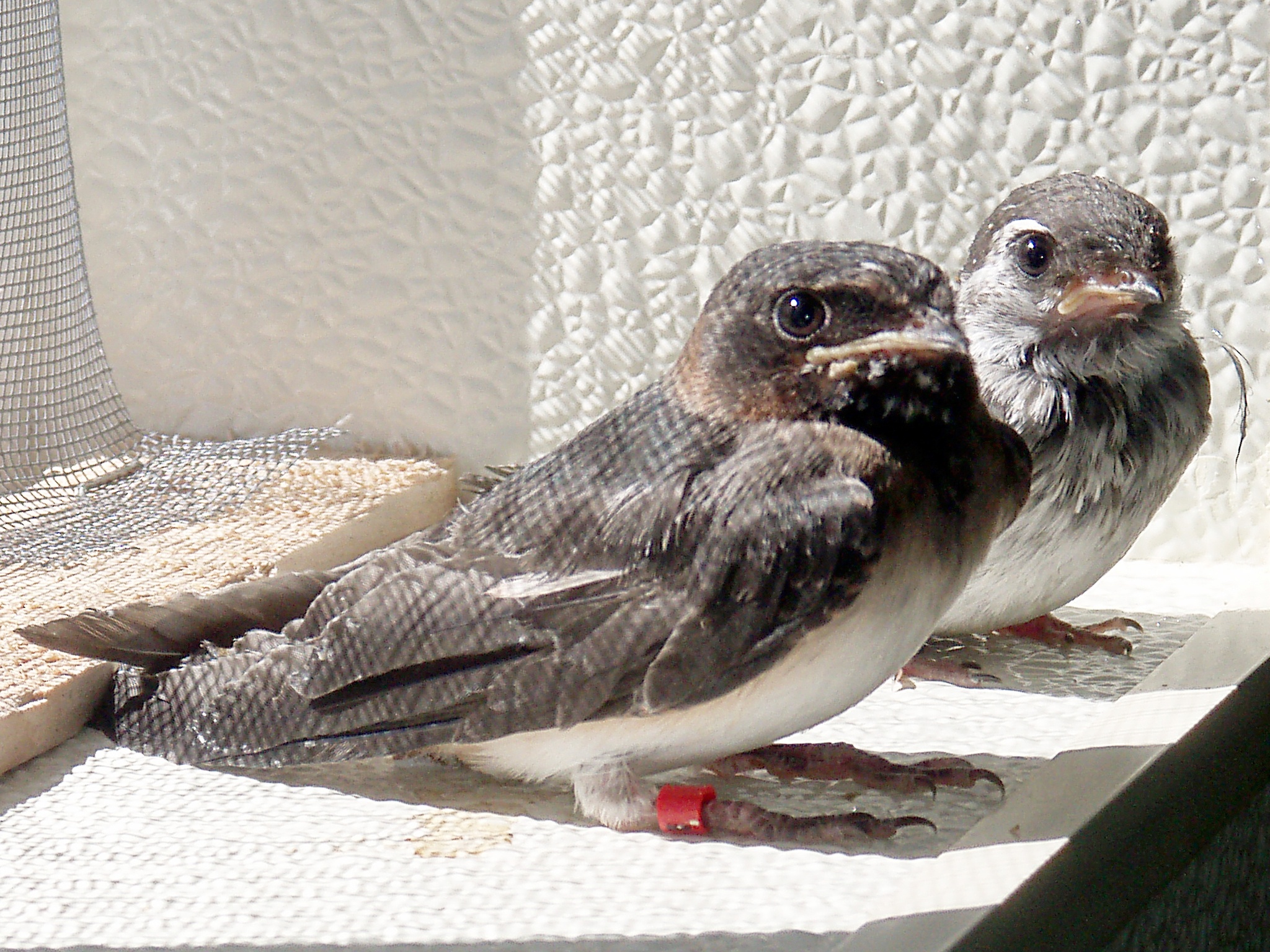Do you enjoy watching swallows swooping around catching insects in mid-air and gathering feathers to line their nests? Or, is your first thought: “Ugh! Bird droppings on the deck!”
There are several species of swallows that spend the summer in our area and outdoor light fixtures, overhanging eaves and small gaps in soffits make perfect, sheltered places for them to build their nests. Eggs are laid, nestlings hatch and the parents are kept busy catching hundreds of insects to feed their hungry brood. But, lots of food means lots of droppings! Little white splotches appear on outdoor furniture, the barbecue or the deck. This is when some people decide they have to knock the nest down, often killing or injuring four or five little swallows in the process.
This is very sad and unnecessary because there are simple ways to minimize the impact of bird droppings without disturbing these beneficial little birds. I know one family who has swallows nesting under their eaves every year. They wait to see where the swallows build their nest that year, move the deck chairs and grill over a few feet and put down a piece of cardboard cut from an old box. Every week or so they replace the cardboard, then spend the summer enjoying watching “their” swallows. How many youngsters will they raise this year? When will they take their first flight?
Another way to prevent swallow droppings getting down to deck level is to attach a piece of wood, about 2 feet long and 6 inches wide, to the wall of the house about 3-4 feet under the nest. This will catch most of the droppings and can then be taken down at the end of the season. It is important not to use too wide a piece or put it too close under the nest because the parents need to have a clear flight path to swoop up to feed their youngsters.
Swallows eat huge numbers of flying insects, including mosquitoes and other biting insects and some that are garden pests, so we all benefit from having them around. But, if you would prefer not to have them nesting on your house, the best plan is to do “preventive maintenance.” In fall or winter, take a look around your house from a bird’s point of view, then make sure vents and other openings are covered and eaves and light fixtures are screened off. Then you can enjoy your summer without worrying about bird droppings.
If this all sounds like much more trouble than knocking down a few nests, remember that swallows and other native wild birds are federally protected, which means it is against the law to damage occupied nests, eggs and young birds.
With just a little thought and ingenuity we can minimize the bird droppings problem, enjoy our decks, and the swallows can spend the summer raising their kids.




